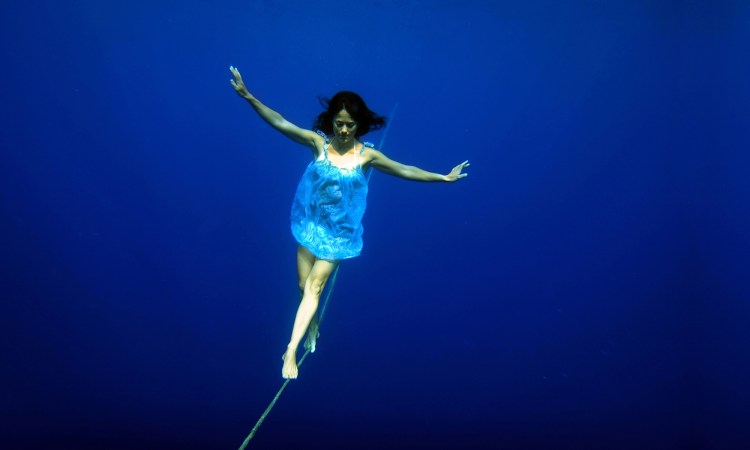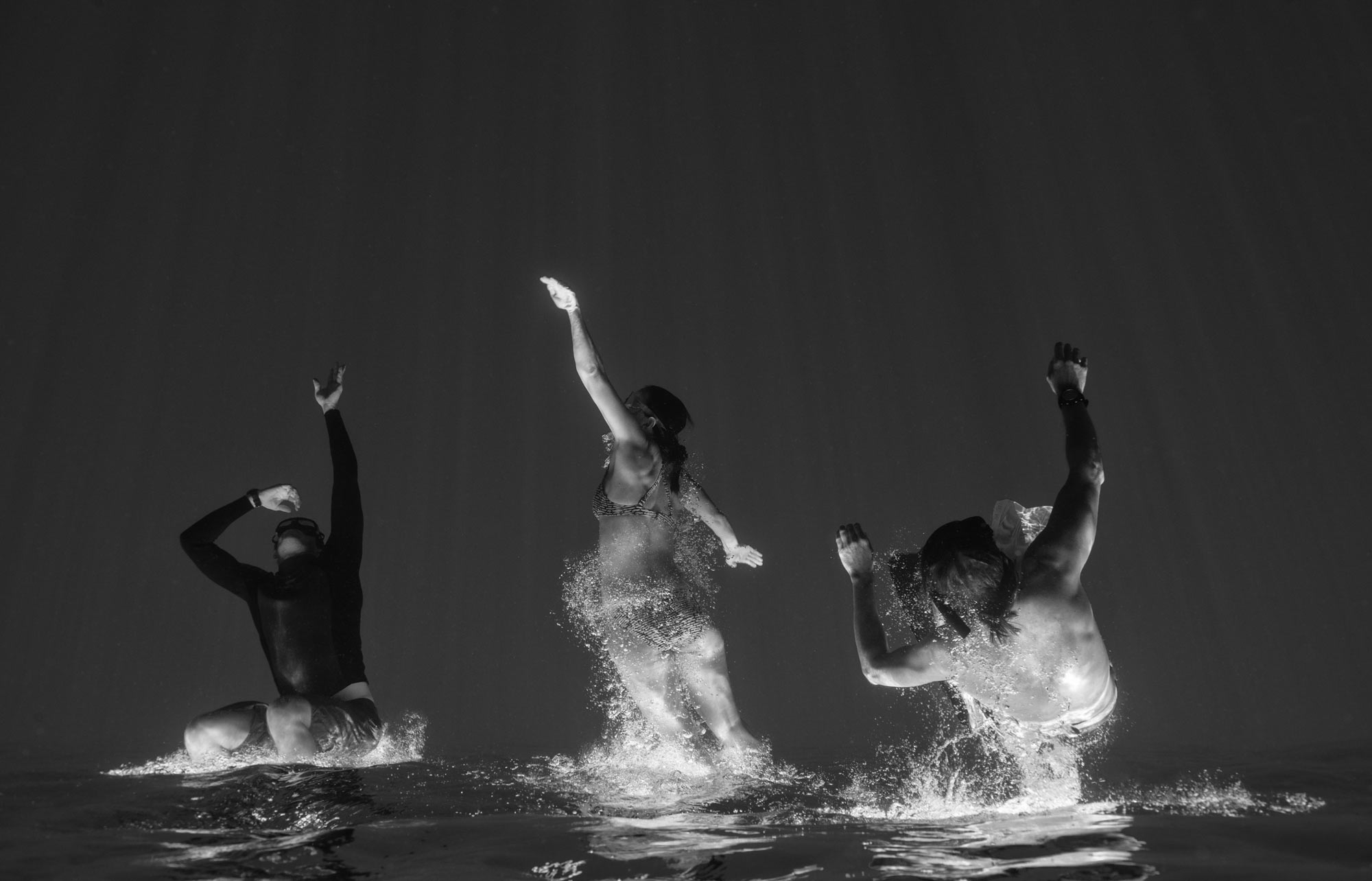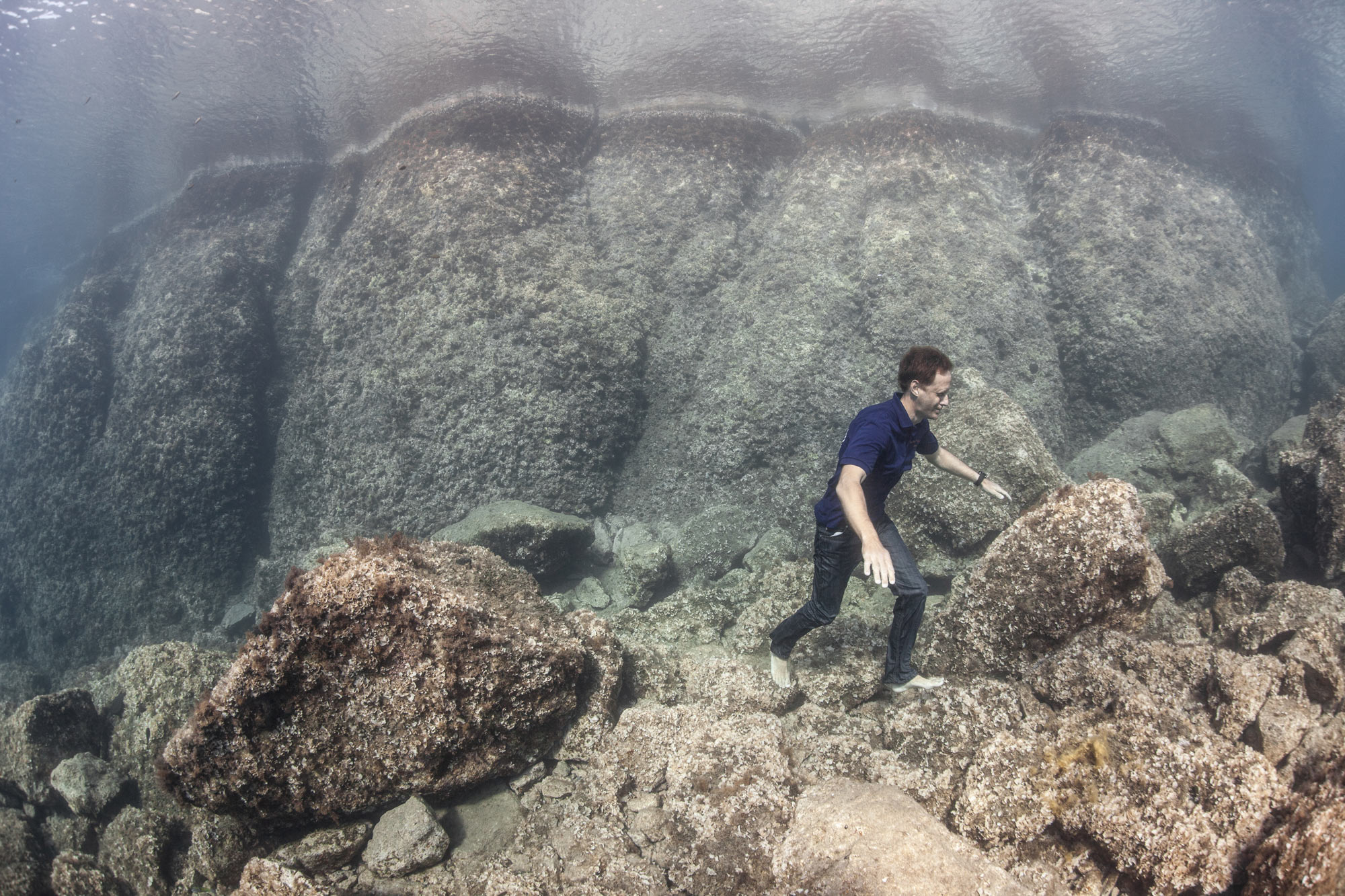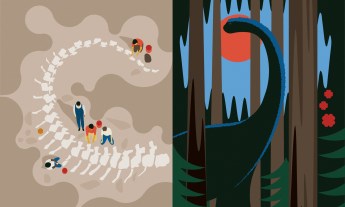
Featured image: Photo of freediver Hanli Prinsloo by Annelie Pompe.
Writer James Nestor explores the science of the “mammalian dive reflex,” the phenomenon by which water triggers an immediate decrease in heart rate.
In 1949, a stocky Italian air force lieutenant named Raimondo Bucher decided to try a potentially deadly stunt off the coast of Capri, Italy. Bucher would sail out to the center of the lake, take a breath and hold it, and free-dive down one hundred feet to the bottom. Waiting there would be a man in a diving suit. Bucher would hand the diver a package, then kick back up to the surface. If he completed the dive, he’d win a fifty-thousand-lira bet; if he didn’t, he would drown.
Scientists warned Bucher that, according to Boyle’s law, the dive would kill him. Formulated in the 1660s by the Anglo-Irish physicist Robert Boyle, this equation predicted the behavior of gases at various pressures, and it indicated that the pressure at a hundred feet would shrink Bucher’s lungs to the point of collapse. He dove anyway, delivered the package, and returned to the surface smiling, with his lungs perfectly intact. He won the bet, but more important, he proved all the experts wrong. Boyle’s law, which science had taken as gospel for three centuries, appeared to fall apart underwater.
Boyle’s law, which science had taken as gospel for three centuries, appeared to fall apart underwater.
Bucher’s dive resonated with a long line of experiments — most of them very cruel and even monstrous by modern standards — that seemed to indicate that water might have life-lengthening effect on humans and other animals.
In 1962, Per Scholander, a Swedish-born researcher working in the United States, gathered a team of volunteers, covered them with electrodes to measure their heart rates, and poked them with needles to draw blood. Scholander had seen the biological functions of Weddell seals reverse in deep water; the seals, he wrote, actually seemed to gain oxygen the longer and deeper they dove. Scholander wondered if water could trigger this effect in humans.
He started the experiment by leading volunteers into an enormous water tank and monitoring their heart rates as they dove down to the bottom of the tank. Water triggered an immediate decrease in heart rate.

Next, Scholander told the volunteers to hold their breath, dive down, strap themselves into an array of fitness equipment submerged at the bottom of the tank, and do a short, vigorous workout. In all cases, no matter how hard the volunteers exercised, their heart rates still plummeted.
This discovery was as important as it was surprising. On land, exercise greatly increases heart rate. The volunteers’ slower heart rates meant that they used less oxygen and therefore could stay underwater longer. This also explained, to some degree, why Bucher could survive up to three times longer in water than they could in open air: water had some powerful, unknown capacity to slow animals’ hearts.
Scholander noticed something else: Once his volunteers were underwater, the blood in their bodies began flooding away from their limbs and toward their vital organs. He’d seen the same thing happen in deep-diving seals decades earlier; by shunting blood away from less important areas of the body, the seals were able to keep organs like the brain and heart oxygenated longer, extending the amount of time they could stay submerged. Immersion in water triggered the same mechanism in humans.
This shunting is called peripheral vasoconstriction, and it explains how Bucher could dive to below one hundred feet without suffering the lung-crushing effects that Boyle’s law had predicted. At such depths, blood actually penetrated the cell walls of the organs to counteract the external pressure. When a diver descends to three hundred feet — a depth frequently reached by modern freedivers — vessels in the lungs engorge with blood, preventing them from collapse.
On land, the equivalent pressures would be debilitating. But not in water. And the deeper we dive, the stronger the amphibious reflexes become.
Boyle’s law was not merely bent in the face of this physiological conversion; it seemed to be nullified.

Scholander found that a person need submerge only his face in water to activate these life-lengthening (and lifesaving) reflexes. Other researchers tried sticking a hand or a leg in the water in an attempt to trigger the reflex, but to no avail. One researcher even put volunteers into a compression chamber to see if pressure alone would trigger a similar diving reflex. No dice. Only water could trigger these reflexes, and the water had to be cooler than the surrounding air.
As it turns out, the tradition of splashing cold water on your face to refresh yourself isn’t just an empty ritual; it provokes a physical change within us.
Scholander had documented one of the most extreme transformations ever discovered in the human body, a change that occurred only in water. He called it the Master Switch of Life.
This excerpt is adapted with permission from DEEP: Life, Death & Amphibious Humans at the Last Frontier on Earth by James Nestor (Houghton Mifflin Harcourt).
[ted id=1643]
[ted id=471]
Featured image: Photo of freediver Hanli Prinsloo by Annelie Pompe.










